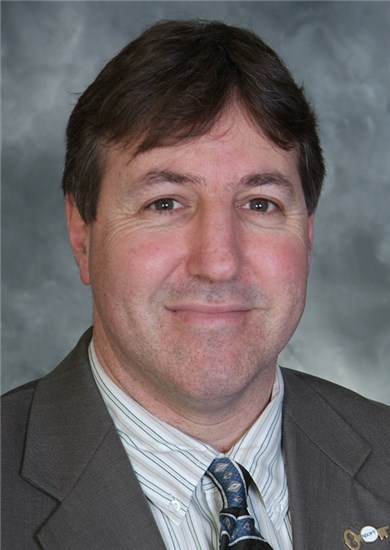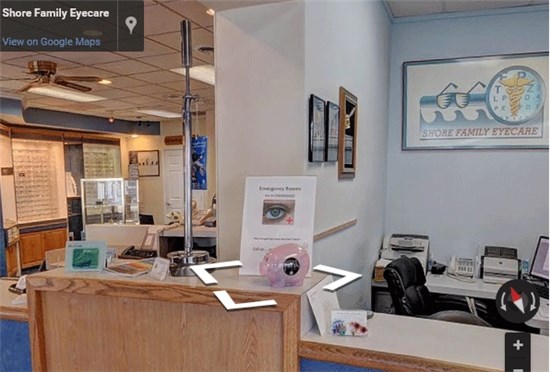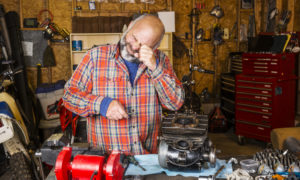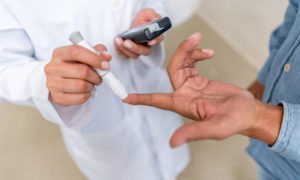Harvey Richman, OD, FAAO, FCOVD, Diplomate ABO

Oct. 12, 2016
The practice started without previous eyecare in the community. By finding a location that had two opticians nearby, the provision of eyecare without having an optical made the transition easy. Our office is in a resort community in a suburban area of New Jersey, but by providing high-quality services, we get referrals from other doctors from all over the state.
The entrance to Dr. Richman’s office, as seen in a virtual tour on his practice web site. Dr. Richman says not having an optical, and instead focusing on medical eyecare and specialty services, like vision therapy, has still enabled a robust practice. A door in the practice leads to a separate optical.
Define Your Practice Model
I work up to six days per week, but travel a lot lecturing. My wife, Maria Richman, OD, works two days per week, but sees only visually impaired adults and children. We also have another doctor, Kathleen Kinzley, OD, who works four-and-a-half days per week, providing general eye examinations. We see on average 40-45 patients per day, ranging from well vision exams, medical exams and low vision visits.
When my wife and I chose the community and location we wanted to be in, Manasquan, N.J., there was already a well established and respected optician in town who was willing to work with us. It helped that this optician also happened to be next door to our office.
As our practice was geared more toward specialty services, such as vision therapy and low vision, routine refractive eye services were not a priority for us. As time progressed, we also started to address more medical eye conditions, such as macular degeneration and glaucoma, that did not require traditional optical management.
A benefit of not having an optical dispensary is patients know that we are there to help them with their problem, without the obligation to purchase materials. The only optical products we dispense are custom low vision optical devices, including microscopes, telescopes and wavelength specific filters.
In addition to our specialty services, and the comprehensive exams we deliver, we see many eye emergency walk-ins during the summer, when there is an influx of people in our resort town. Most of the time, it is from people on vacation who slept with their contacts in, or got sand in their eye. This is a win-win situation as we treat the medical condition and the opticians nearby get a temporary prescription for glasses until the eye recovers. One thing that we have stuck to over the years is that the office is open 9 a.m.-5 p.m., but we do answer emergency calls all hours 365 days per year.
Our office is spatially challenged, so we do not stock contact lenses for the most part. However, we work with a distributor that gets us contact lenses by the next day, so that is often faster than buying online, and the distributor is willing to ship directly to patients if they choose.
Establish Relationships with Other Practices
As many patients are sent to us for medical eyecare or specialty care, like vision therapy, from surrounding optometrists, ophthalmologists, occupational therapists and schools, they often are returned by us with a prescription to be filled at the referring doctor’s office or local optical facility.
We often get referrals from ophthalmologists for work with patients for convergence problems. Additionally, stroke patients, patients with oculomotor difficulty due to multiple sclerosis, and post TBI patients are referred for therapy. Lastly, as my wife’s practice is limited to low vision, most of the retinal doctors in the surrounding counties refer for services.
Assess Advantages & Disadvantages of No Optical
We do more than 3,000 comprehensive eye exams per year, and send all of these patients out to get glasses elsewhere. We do it because we want to provide service to patients without the headaches of the optical. We do get lots of referrals from the local opticians, but also many optometrists, ophthalmologists and occupational therapists, and pediatricians make referrals also.
We strive to provide the best quality exam, so that patients and the referral sources appreciate it, and that is the reward that we work toward. We realize that there is probably hundreds of thousands of dollars that we are missing, but we are satisfied with the level of profitability we have been able to attain.
The primary advantages of not having an optical are the lack of overhead, the lack of staffing requirements and the lack of challenges associated with optical problems. A secondary advantage is that we don’t have to participate with vision plans if we don’t want to. I don’t have to deal with reduced fees for quality service. Patients either use their medical benefits if appropriate, or pay for what they get.
The primary disadvantage is the lack of income. As most offices make their income from the sale of goods, we are essentially leaving money on the table. The disadvantages of not having an optical business are managed by maximizing the revenue from services, be it evaluation and management, therapy or medical management.
The secondary disadvantage is that we are limited to participation in several medical plans because they require us to be part of the vision plan to be in network. We are working with the state legislature to fix this again, as we did last year. The bill we wanted was passed by both state legislative houses in 2015, but vetoed by the governor.
Optimize Space that Otherwise Would be Used for an Optical
Part of the area that we would have used for an optical is used for our vision therapy practice and low vision device demonstration, and any additional space is used for special diagnostic devices for the medical assessment of eye diseases. Our office manages all types of medical eye conditions, including the diagnosis and treatment options. To handle this, we have to maintain a fairly high level of minor surgical tools, electrodiagnostic instruments, laboratory testing equipment and pharmacologic options. This is managed through a robust electronic medical record system, integrating all of the information in one easy-to-use place.
Harvey Richman, OD, FAAO, FCOVD, Diplomate ABO, is the owner of Shore Family Eyecare in Manasquan, N.J. To contact:drrichman@lowvision-nj.com


























